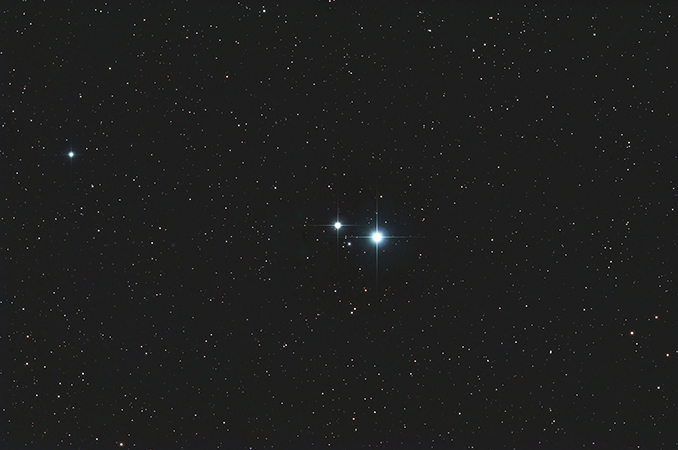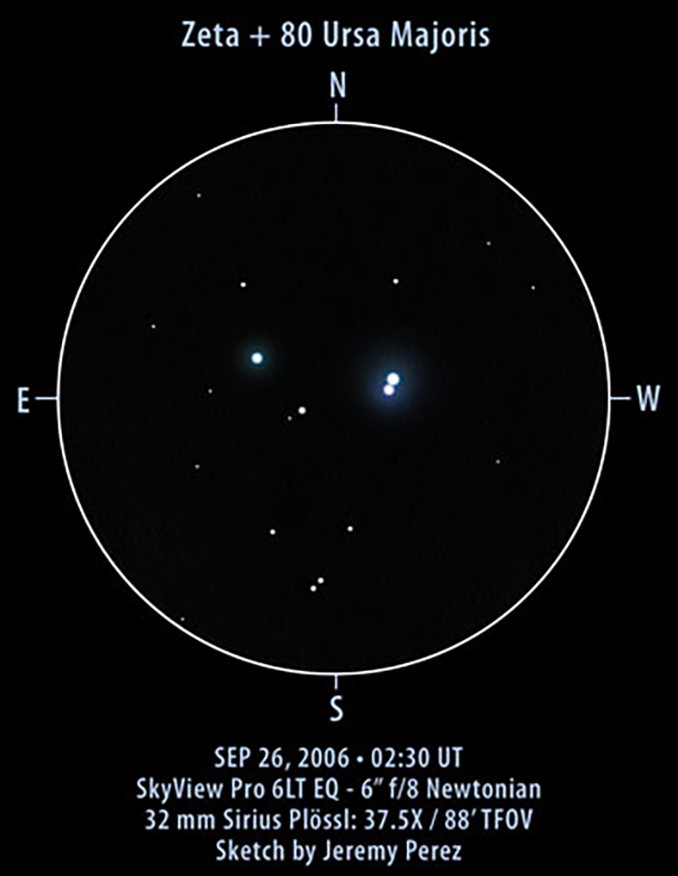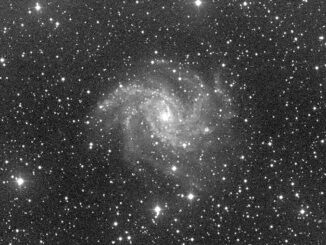
Not only of surpassing interest historically, zeta Ursae Majoris (UMa), or Mizar, the middle star in Ursa Major’s famous Plough asterism, is also one of the finest double stars in the sky for a small telescope. A steady gaze will convince the average eye that Mizar is not a singular star, but is accompanied by slightly dimmer star, Alcor (80 UMa, off to the north-east.
Long before the telescopic era began the naked-eye pair of Mizar and Alcor (magnitudes +2.1 and +4, 706 arcsecond separation) was well known. When Benedetto Castelli turned one of Galileo’s telescope on Mizar in January 1617, he found it was a close pair, a fact confirmed by Galileo a week later. Mizar’s white, magnitude +2.2 and +3.9 components are separated by a very forgiving 14 arcseconds.

In 1889, Mizar A was itself found to be the first spectroscopic binary (SB), with a period of 20 days, and three decades later was resolved by the pioneering interferometric work of F.G. Pease and J.A. Anderson with the 100-inch reflector at Mount Wilson. Today, we know that Mizar B is an SB and Alcor has a faint low-mass companion only one arcsecond away; this sextuple system is only the second known within 130 light years of the Sun (the other being Castor). All six stars move through space together, but the visual observer can see only three of them.
Mizar and Alcor are a fine sight in binoculars and stabilised versions of this instrument may suffice to resolve Castelli’s component, Mizar B, but the smallest telescopic aid will show them well. The three bright stars are all early A-type stars and lie 84 light years distant. The linear separation between Mizar and Alcor is around 75,000 astronomical units (AU); compare with the 30 AU between the Sun and Pluto.




